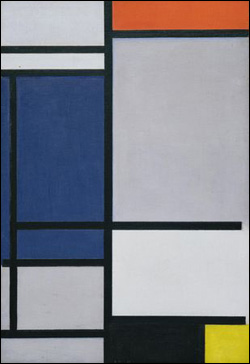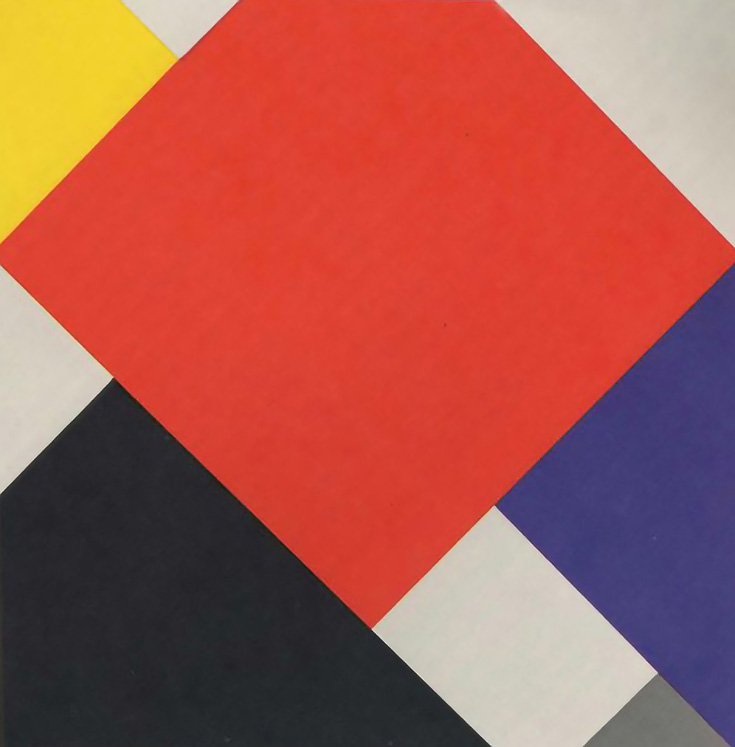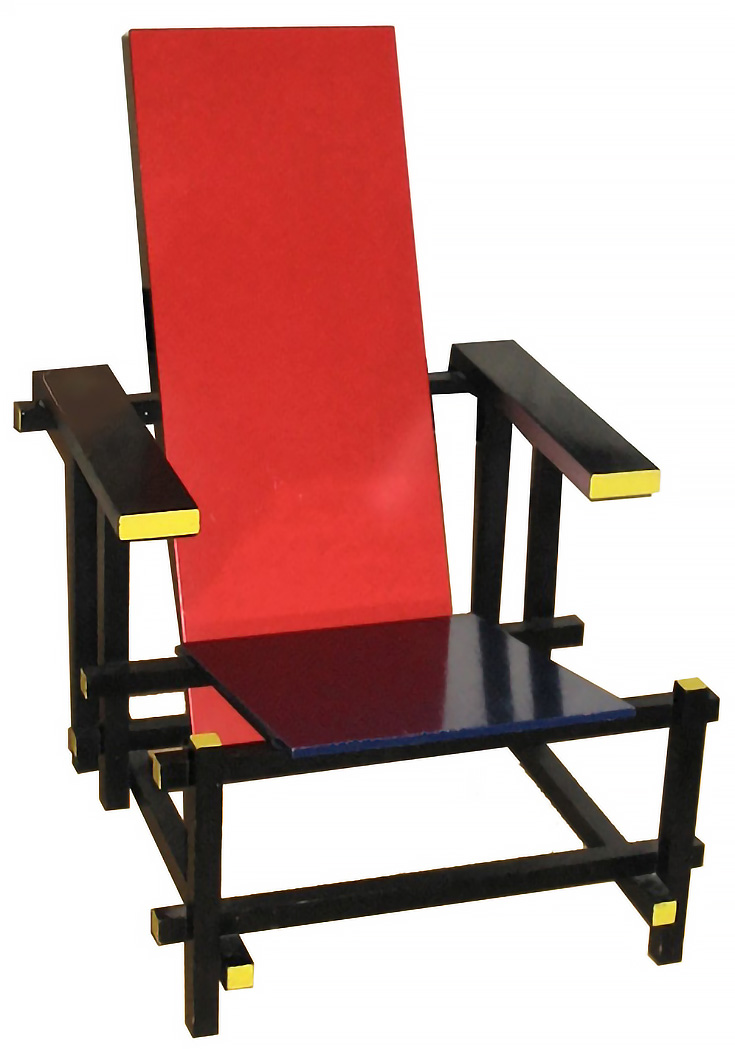
Or imagine painting only squares and straight lines. Sound crazy? Well, to a group of Dutch artists in the early 20th century, this type of art (called De Stijl) was a complete reality.
The De Stijl art movement had just one goal: to make art that was as simple and as basic as possible. They wanted to distill art to a level of almost scientific precision and perfection.
As a result, composition and balance played a huge part in their work, making the De Stijl art movement fairly influential in the next few decades of modern design and modern architecture.
You’ve probably seen De Stijl paintings before, perhaps by Piet Mondrian or Theo van Doesburg. Those paintings are easily recognizable by their squares, rectangles, and limited colors—primary colors only, for the most part.
Here’s a painting by van Doesburg—note the diagonal shapes, especially. In this painting at least, you can easily tell the difference between his work and Mondrian’s.
Piet Mondrian didn’t use diagonal lines, or the color green (although some De Stijl artists did). And Mondrian, the leading painter of the group, actually came up with the official name of this new style of art: he called it Neo-Plasticism, not De Stijl.
Mondrian’s name for it makes more sense—Neo means “new” and Plasticism refers to the “form” that art takes. De Stijl simply means “The Style” and was taken from the name of a journal published by Theo van Doesburg about Neo-Plasticism.
Now, here’s one of the more unique creations from this era: a chair by Gerrit Rietvel, fashioned in the same Neo-Plastic or De Stijl style.
It looks amazingly like a Mondrian painting turned 3D, doesn’t it?
But amazing chairs aside, when compared to later modern movements like Abstract Expressionism (with all its color and complete freedom of style) many people have a hard time understanding why anyone would want to restrict themselves so much!
The truth is, all throughout history art has swung back and forth between two extremes—complete chaos and complete order.
The De Stijl art movement was simply on the far end of the “order” side, and for van Doesburg, Mondrian, and a few others, order was much more preferable than any other alternative of their day.
This post may contain affiliate links.


